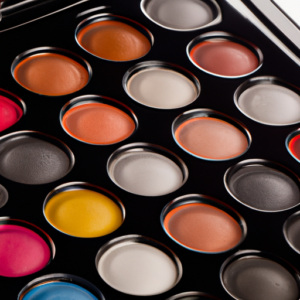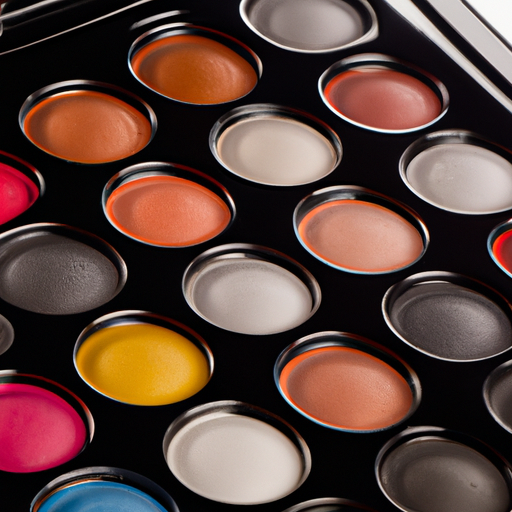Cut to the Contour: Finding the Right Products for Your Face
Hey there, contour queens! Let’s get real – a proper contour can make all the difference in creating a flawless, chiseled look. But, finding the right product for your face isn’t always easy. Lucky for you, I’ve got some expert advice to make your life easier.
First things first, let’s define what “face contouring” is. This makeup technique involves using different shades of products to create the illusion of a more defined and sculpted face. Whether you’re looking to slim down your nose, define your cheekbones, or create a more structured jawline, the right contour products can help you achieve the look you’re going for.
So why does using the right product matter? Well, aside from the obvious fact that using the wrong shade or formula can result in a less-than-flattering look, using the right products can also benefit your overall skin health. When you use products that are tailored to your individual skin type, tone, and concerns, you’ll be less likely to experience irritation, breakouts, or other unwanted side effects.
Identifying Your Skin Type: The Key to Perfect Contouring
So, you want to get into contouring? Well, before you can get started, you need to know your skin type. Trust me, I learned this the hard way after using the wrong products and ending up with a cakey mess.
Knowing your skin type is crucial because it affects how makeup sits on your face and how long it lasts. Oily skin tends to break down makeup more quickly, while dry skin needs more moisturizing products to prevent flakiness. Normal skin is the easiest to work with since it’s well-balanced, while sensitive skin requires extra care and non-irritating products. Combination skin, on the other hand, needs a different approach depending on which areas are oily and which are dry.

But how do you figure out your skin type? Well, there are a few ways. You can observe how your skin feels and looks throughout the day, especially after cleansing. You can also take an online quiz or visit a dermatologist for a professional analysis.
Once you know your skin type, you can start searching for contouring products that are tailored to your needs. For example, if you have oily skin, you should look for oil-free and matte-finish products to control shine. If you have dry skin, you should look for cream or liquid formulas that provide hydration and a dewy finish. And if you have sensitive skin, you should look for fragrance-free and hypoallergenic products that won’t irritate your skin.
Remember, finding the right products for your skin type is essential for a flawless contouring look. Don’t skip this step, or you’ll end up wasting your time and money on products that don’t work for you. So, take the time to identify your skin type and choose the right products accordingly.
Want to learn more about the rules of contouring makeup? Check out this helpful guide from BestEyelashExtensionsSupplies.com.
Get the Perfect Match: Consider Your Skin Tone
Another significant factor to take into account when looking for the right face contouring product is your skin tone. Knowing your skin undertone helps determine the right shade of the product that would suit you best and give you the most natural look.
It’s important to note that while your skin color can change due to factors such as sun exposure and skin damage, your skin undertone remains consistent. Skin undertones can be categorized into cool, warm, or neutral, and finding the perfect match entails choosing products that match your skin undertone.
As someone with a cool undertone, I tend to look for products with a pink or blue base. These products help create a natural-looking shadow that enhances my features without appearing too harsh. Those with warm undertones should look for products with a yellow or peach base, while neutral undertones can use products with both cool and warm shades.
Ensuring the right product for your specific skin undertone can make all the difference in your face-contouring routine and give you the confidence and natural-looking finish you’re after.
Choose Wisely: Picking the Perfect Ingredients for Your Face Contouring Products
Now that you have identified your skin type and undertone, it’s time to move on to the next crucial aspect of choosing the right face contouring products: the ingredients.
As someone with sensitive skin, I religiously check the ingredient list before purchasing any skincare or makeup product. Look for natural and non-toxic ingredients such as jojoba oil, aloe vera, and shea butter. Avoid harsh chemicals like parabens, fragrances, and sulfates that can irritate your skin and cause breakouts.
Another thing to consider is the formula and texture of the product. For dry skin, opt for creamy or liquid products that will hydrate and moisturize your skin while contouring. For oily skin, pick products with a matte finish to avoid any added shine.
I also recommend doing your research on any unfamiliar ingredients to ensure that they won’t cause any adverse reactions. Ask your dermatologist or a beauty expert for their opinion on the products that you are considering.
Remember, what works for someone else may not work for you. Experiment with different products and ingredients until you find the perfect fit for your skin.
Tips on Application: Get that Perfect Contouring Look
Okay, so you’ve found the right face contouring product for your skin type, tone, and desired effect. Now what? It’s time to apply it! Let me give you some tips and tricks to make sure you get that perfect contouring look.
First things first, always start with a clean face. Apply your regular moisturizer and let it settle before you begin. Next, it’s important to apply your contouring product in the right order. Start with your contouring shade, then move on to your bronzer and blush. This will create a more natural-looking gradient effect.
When applying your contour shade, use a light hand and build up gradually. It’s easier to add more product than it is to remove it once it’s applied. Apply the product in the hollows of your cheeks, along your jawline, and on the sides of your nose to create the illusion of depth and dimension.
To blend your contour shade, use a brush that is specifically designed for contouring. Use small, circular motions to blend the product into your skin. Blending is essential to achieving a natural-looking finish, so be sure to take your time.
Next up is the bronzer. Apply the product to the areas where the sun hits your face – your forehead, cheekbones, and nose. Use a light hand and build up the product gradually. Lastly, apply your blush to the apples of your cheeks and blend it in with the bronzer.
Remember that less is more! It’s easy to get carried away with the amount of product you apply. Practice makes perfect, so don’t get discouraged if it takes a few tries to get the look you want. With these tips and tricks, you’ll be a contouring pro in no time!
Wrapping it all up – My Final Thoughts
Well, that’s a wrap! We’ve covered everything you need to know about face contouring, from identifying your skin type and tone, to choosing the right products and application techniques. Now, you may be wondering, why bother with all of this?
Let me tell you – face contouring can really transform your look! With just a few simple steps, you can achieve a more chiseled jawline, higher cheekbones, and a slimmer nose. Plus, it’s a fun way to experiment with makeup and express your personal style.
But, it’s important to remember that not all products are created equal. You have to find the right ones for your skin type, tone, and personal preferences. Do your research, read reviews, and don’t be afraid to ask for help at the makeup counter.
And, last but not least, practice makes perfect! Don’t get discouraged if your first attempt isn’t perfect. Keep practicing and experimenting until you find the look that works best for you.
So, go forth and contour – with these tips in mind, you’ll be a pro in no time!
